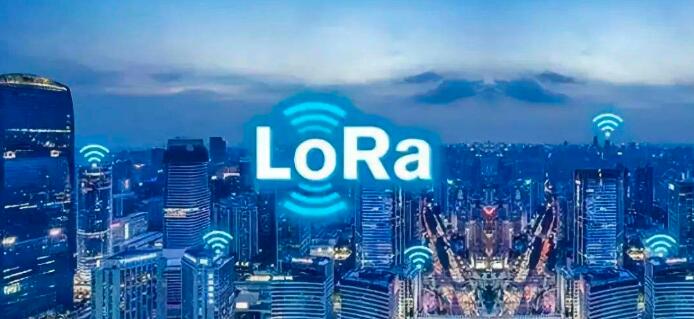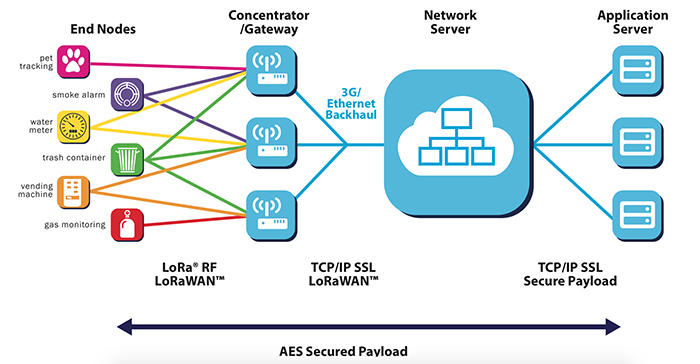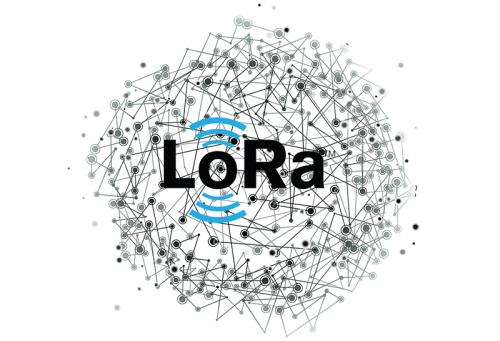We are now in the era of the Internet of Things. With the rapid development of the Internet of Things, wireless communication technology has also developed rapidly. Among the various connection technologies at the network layer of the Internet of Things, not only 5G technology with higher speed and stability is needed, but also low power consumption is required. , long-distance, large-connection LPWAN (Low-Power Wide-Area Network, low-power wide-area network) technology.
Among them, LoRa WAN stands out for its unique flexibility and is recognized by the IoT community. When it comes to LoRaWAN, we have to mention LoRa. LoRa is a subset of LoRaWan. It is a modulation technology of the physical layer. It uses linear modulation and spread spectrum, which can significantly improve the receiving sensitivity and achieve farther than other modulation methods. communication distance. As one of the mainstream LPWAN technologies, LoRa is empowering the transformation of the Internet of Things in smart cities.


LoRa: low-power wide-area IoT technology that is easy to build and deploy
The name of LoRa is Long Range Radio. As a linear frequency modulation spread spectrum modulation technology, it was first launched by Cycleo, a startup company founded by several young people in France. In 2012, Semtech acquired the company and This modulation technology is packaged into the chip, and a complete set of LoRa communication chip solutions is developed based on LoRa technology, including different LoRa chips for gateways and terminals, opening the road to commercialization of LoRa chips.
However, just a transceiver chip based on LoRa modulation technology is far from enough to leverage the vast IoT market. In the subsequent development process, due to the LoRa Alliance initiated by multiple manufacturers and the launch of the continuously iterative LoRaWAN specification, a A wide-area networking standard system supported by hundreds of manufacturers around the world, thus forming a broad industrial ecosystem.
The relevant technical standards, product designs, application cases, etc. that promote this ecosystem are all processes that multiple manufacturers participate in. These are also the more critical elements in forming the current huge industrial ecosystem, and they are not owned by a single Semtech company, such as LoRaWAN. The specification is an open standard that is participated by multiple manufacturers around the world. Any organization or individual can develop products and deploy networks based on this specification.
Compared with most networks that adopt mesh topology, it is easy to continuously expand the network scale. However, the disadvantage is that various unrelated nodes are used to forward messages and the routing is circuitous, which increases the system complexity and total power consumption. LoRa uses a star topology (TMD networking method). The gateways are connected to the terminal nodes in a star shape, but the terminal nodes are not bound to a unique gateway. On the contrary, the uplink data of the terminal nodes can be sent to multiple gateways. Theoretically, users can achieve flexible networking through Mesh, point-to-point or star network protocols and architectures.


Arquitetura da rede LoRa
LoRa mainly operates in free frequency bands around the world (i.e. unlicensed frequency bands), including 433, 868, 915MHz, etc. The LoRa network architecture consists of four parts: terminal node, gateway, network server and application server. Application data can be transmitted in both directions.
LoRa is a physical layer or wireless modulation that creates long-distance communication connections. Compared with traditional FSK technology and short-distance radio frequency technology with insufficient stability and security, LoRa is based on CSS modulation technology (Chirp Spread Spectrum) while maintaining low power consumption. At the same time, the communication range is greatly increased, and CSS technology has been widely used in military and space communications for decades. It has the characteristics of long transmission distance and strong anti-interference.
In addition, LoRa technology does not require the construction of base stations. One gateway can control many devices, and the network layout method is more flexible, which can greatly reduce construction costs.


LoRa is widely deployed in smart communities, smart homes and buildings, and smart meters due to its low power consumption, long transmission distance, and flexible networking. , smart agriculture, smart logistics and other vertical industries, with broad prospects.
Summary of LoRa features:
- Transmission distance: up to 2-5Km in towns and 15Km in suburbs.
- Working frequency: ISM frequency band includes 433, 868, 915MH, etc.
- Standard: IEEE 802.15.4g.
- Modulation method: Based on spread spectrum technology, a variant of linear modulation spread spectrum (CSS), with forward error correction (FEC) capability, semtech company’s proprietary patented technology.
- Capacity: A LoRa gateway can connect thousands of LoRa nodes.
- Battery life: up to 10 years.
- Security: AES128 encryption.
- Transmission rate: several hundred to tens of Kbps. The lower the rate, the longer the transmission distance. This is like a person picking things up. If you pick more, you won’t be able to go very far, but if you pick less, you can go further.
LoRa development status
Starting around 2014, the first batch of domestic companies began to develop LoRa-related products. In the past five years, LoRa has grown from a small wireless technology used in a small area to a de facto standard that everyone knows in the field of Internet of Things.


At the beginning of last year, the Radio Administration Bureau of the Ministry of Industry and Information Technology issued the opinions on the “Technical Requirements for Micropower Short-distance Radio Transmission Equipment (Draft for Comment)”, which mentioned that the use of the 470-510MHz frequency band is allowed for wireless microphones, specifically radio equipment used to transmit sound. , rather than data; at the same time, it is emphasized that “limited to single frequency point use, cannot be used for networking applications.” A draft solicitation for comments on LoRa networking applications has received widespread attention from industry insiders, causing the development of LoRa networks in China to face difficulties.
In the end, with the efforts of people from all walks of life in the industry, the regulations of the Ministry of Industry and Information Technology did not clearly state that networking cannot be established, but stated that local area networks can be used, and restrictions on specific applications were also lifted, thus solving the uncertainty of LoRa’s domestic development. On the other hand, as several major Internet giants Tencent, Google and Alibaba have successively joined the LoRa Alliance, they have introduced strong support to the LoRa ecosystem and jointly dealt with the problems faced by LoRa in the development process.
Technology giants have entered LoRa and joined the LoRa Alliance. It can be seen that each company hopes to use LoRa as an entry point to establish its position in the Internet of Things and Industrial Internet. The two major Internet giants Alibaba and Tencent regard LoRa as an important entrance to their IoT layout. The LinkWAN platform and TTN platform they promote are very obvious in driving the upstream and downstream of the industry chain. In addition, groups such as China Telecom, China Unicom, and Broadcasting and Television have also begun to layout the LoRa industry to further promote its application in various industries.
Judging from the current market structure, thousands of domestic companies have participated in the LoRa industry ecosystem, showing a pattern of joint participation of large, medium and small enterprises, traditional enterprises and Internet enterprises. The domestic industrial environment for LoRa development continues to improve, and the LoRa Alliance’s own strength is also growing.
According to information, domestic LoRa chip shipments reached tens of millions in 2018. Among them, module and meter manufacturers accounted for most of the purchasing share, followed by base station manufacturers. In addition, there are a large number of dispersed module and terminal manufacturers in China who also directly purchase LoRa chips. Although they are all in small batches, the total scale is considerable.
For most module, terminal, system and application manufacturers, they are neutral with regard to various technologies, and the choice of which technical route to take is mostly a purely market-oriented behavior. LoRa chips are important underlying components that support the entire industry, but the formation of the entire industrial structure depends on the joint efforts of multiple forces, which has already been formed in China. It has become an industry consensus that LoRa-related products are highly flexible, not only because they can independently deploy networks in various environments, but also because developers of all types can choose multiple platforms and quickly receive development support.
In the past year, LoRa has also had a large number of industrial applications in vertical fields such as smart cities, smart parks, smart buildings, and smart security.